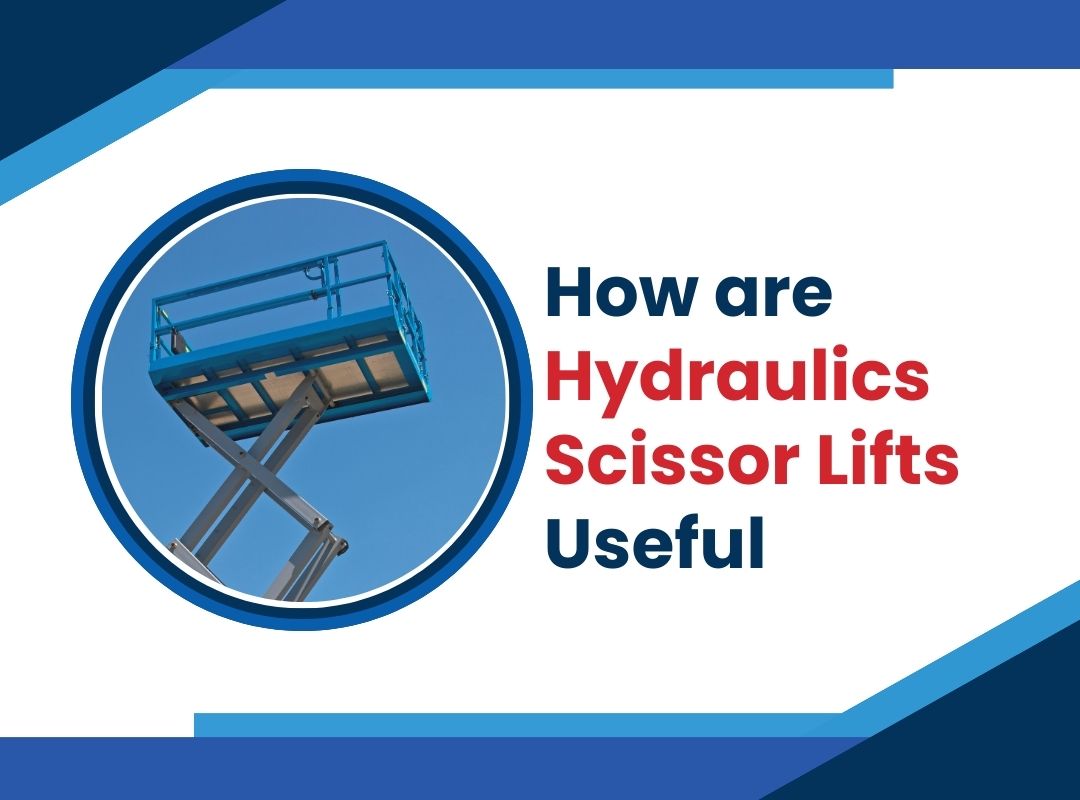If you’ve ever driven or walked past a construction site, you’ve probably seen a Hydraulic Scissor Lift. These lifts are quite commonly used in industries, and they might look quite complicated, but the mechanics aren’t that hard to figure out. They’re highly-valued systems because they can be operated quite easily, and they serve a number of functions. We’re going to explain everything you need to know about hydraulic scissor lifts, and what they can be used for.
What Exactly are Hydraulic Scissor Lifts?
A hydraulic scissor lift is a lifting platform and can be either mobile or fixed, depending on what use it’s being put to. The reason the word ‘scissor’ is used in the name is evident when you see the mechanism. The lift has a base and an upper platform, and linking them is a cross pattern brace that serves as the ‘scissor’ section. A hydraulic cylinder powering the mechanism is placed at the base, and the top platform can move higher or lower, which can be used for moving objects.
There are other types of Scissor Lift Platforms, but hydraulic ones are the most common. When fluid moves into the hydraulic cylinder placed at the base, the force exerted are used to push the scissor legs apart (one inner and one outer leg are connected to both the base and upper platform), and thus the mechanism pushes upwards, lifting the upper platform. Usually, a check valve in the cylinder keeps the fluid in place, and once the release valve is activated, the fluid flows back to the reservoir, and the mechanism lowers. The hydraulic cylinder is usually powered by a motor.
So, just to refresh your memory, the five essential parts of a basic hydraulic scissor lift are as follows:
- The base, which is on the ground, and holds up the structure
- The lifted platform, which can be moved vertically by hydraulic power, and is used to lift objects
- The hydraulic cylinder(s) powering the mechanism (one to three cylinders are common)
- The legs of the mechanism, which are scissor-like, and allow the platform to move up or down
- The power source
What are they Used for?
Hydraulic scissor lifts platform are mostly used in industrial work, and since they’re so easy to operate, there’s not much of a learning curve. Even amateurs can use them. Warehouse employees use them to transport large, heavy goods (or multiple goods) and load or unload products. This work can be done in batches due to the lift. Construction workers make use of such lifts when they’re dealing with high buildings as well; hydraulic scissor lifts have platforms of various sizes to accommodate various uses. Painters, repair workers, and cleaners might also use the lift for the same reason: to easily access high places.
They may also be used in docks, and are generally good to have on hand when large objects need moving. They can even be used in car repairs.
Hydraulic scissor lifts are often the preferred choice in industrial use; they’re budget-friendly and don’t fall apart easily. Unlike electrical or mechanical lifts, they are compact and don’t have very many parts. The fact that the mechanism doesn’t require much knowledge to operate is also a reason why so many factories and industries use this particular type of lift, just press a lever or two, and voila!
Final words
Hopefully, you’ve now learned all you need to know about hydraulic scissor lifts and their uses. While they do have their disadvantages, the fact that they’re so ubiquitous speaks to their immense value in most industries.


